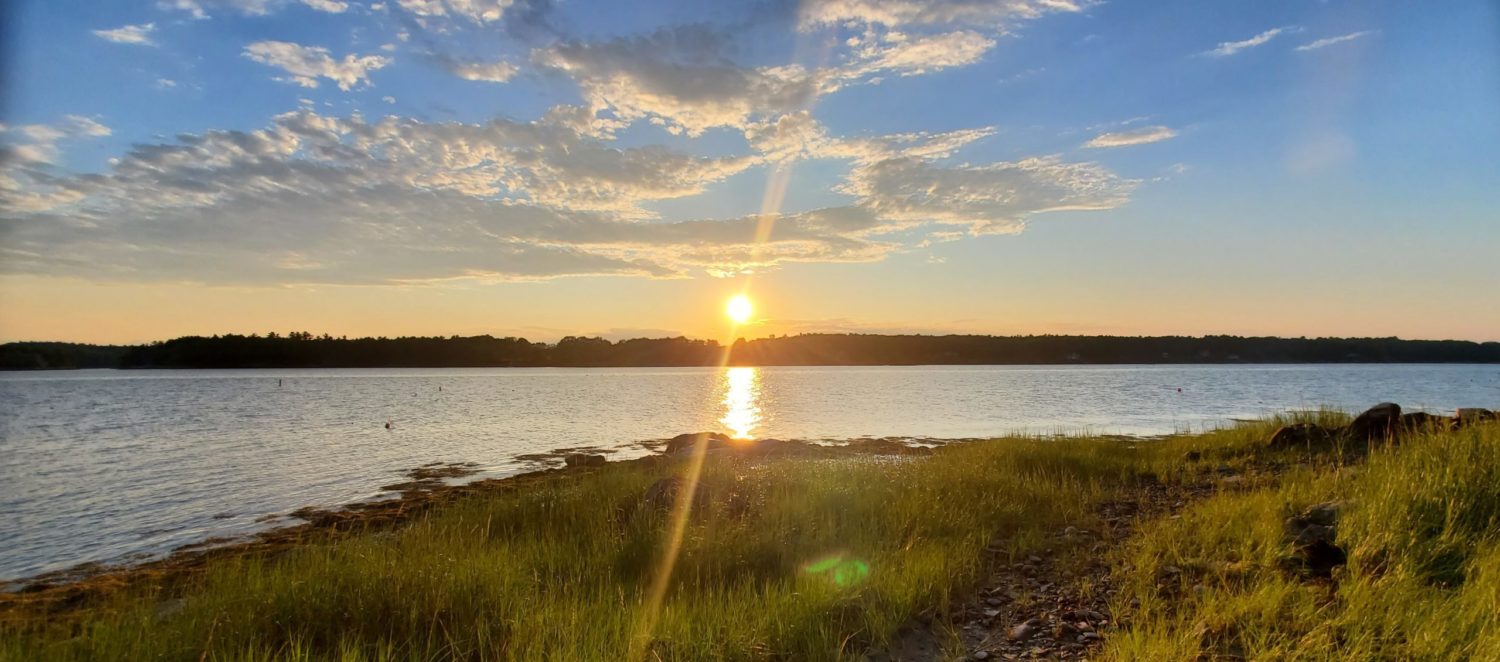The Name: Named for the Eider ducks that hang in the little cove where the farm’s floats are housed. Eiders love oysters, but they haven’t quite figured out how to break into the bags they are kept in. Fingers crossed that they can’t!
The Family: The farm is owned and operated by Peter (“Pete”) Francisco (from the 18th century Dutch Van Cisco), a veteran and legend in the Maine Oyster Industry. At one time, the farm was also one the largest regional nurseries. Pete’s aquaculture mission began in 2014 as an attempt to diversify his family’s 200+ year old salt water farm and prepare it for future generations with an eye towards sustainability. Indeed, during peak seasons, three generations can be seen across the farm.
History: Eider Cove Oyster Farm is situated at the base of a 75 foot ridge comprised of granite boulders, embedded with quartz and tourmaline, and covered with Norway and White Pine Trees. The ridge is part of a salt water farm dating back to the 1700s (the main house on the 40 acre farm above was completed in 1802 and some recycled ship timbers in the basement date to the Revolutionary War) where a variety of crops and livestock have been raised for most of its existence. Several thousand feet of old stone walls traverse the property above a half mile of its shoreline that fronts on both sides of a peninsula. Middens of clam and quahog shells give evidence of the farm’s relationship with the river. Prior residents included a sea captain, boat builders and fishermen. Several are buried in a small cemetery on the property.
How They’re Grown: The farm is located a mere 100 feet off the rocky shoreline of the property’s main farmhouse above. The oysters are grown entirely in mesh bags at the surface, except for a winter stint in cages sunk to the bottom. This allows the oysters to stay safe below the frozen estuary surface. Because of the proximity and method, the oyster business requires virtually no fossil fuel or electricity to run.
How They Taste: Salty like a potato chip that has a healthy dollop of French onion dip on top. So, basically perfect.
Why They Are Unique: The cove is almost 9 miles from the ocean but gets the strong tidal flow, which at the surface on the river creates a unique, clean and nutrient-dense environment and allows for the signature development of their harder, protective shells and deep cups which hold copious succulent briny meat.
Size: Regular (3+ inches).
